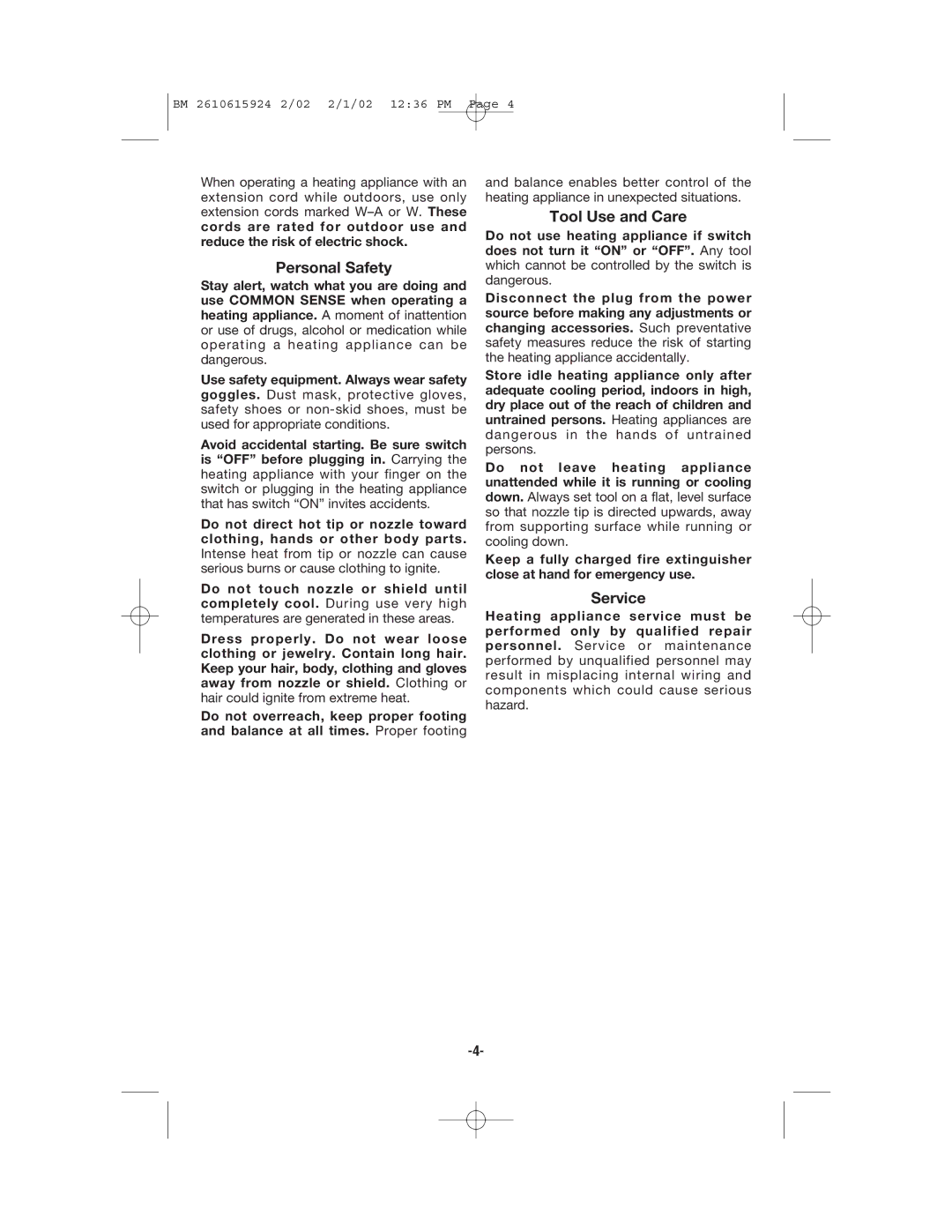1942 specifications
In 1942, Bosch Power Tools established itself as a vital contributor to the world of engineering and construction, capitalizing on innovative technologies that set a new standard for performance and reliability. As the global marketplace grappled with the challenges brought by World War II, Bosch focused on maintaining high-quality standards in the production of power tools, reflecting its commitment to excellence.One of the standout features of Bosch power tools during this era was their durability. Built to withstand the rigors of heavy-duty use, these tools effectively catered to the demands of both professional tradespeople and industrial applications. The robust design ensured that the tools could endure challenging operating conditions while delivering consistent performance.
Another defining characteristic of Bosch's offerings in 1942 was their ergonomic design. The tools were crafted with user comfort in mind, featuring grips and controls that enabled ease of use. This attention to ergonomics not only improved efficiency but also minimized fatigue, allowing users to work longer without discomfort.
In terms of technology, Bosch was at the forefront of creating powerful, efficient motors that enhanced performance. These motors allowed the tools to accomplish tasks more quickly and efficiently, reducing the time required for projects while maintaining a high standard of quality. Additionally, Bosch innovative engineering enabled tools to deliver a superior power-to-weight ratio, making them not just powerful, but also easy to handle.
Versatility was another hallmark of Bosch power tools in 1942. The company's extensive range included drills, saws, sanders, and more, each designed to tackle a variety of projects with ease. This adaptability made Bosch tools essential for professionals engaging in various trades, including carpentry, masonry, and metalworking.
Moreover, Bosch was committed to continuous improvement. The company invested in research and development to refine its tools, ensuring they met the evolving needs of its customers. This forward-thinking approach solidified Bosch's reputation as a leader in the power tool industry.
In conclusion, Bosch Power Tools in 1942 showcased a harmonious blend of durability, ergonomic design, powerful technology, versatility, and a commitment to innovation. This combination not only addressed the immediate demands of the wartime environment but laid the groundwork for Bosch's enduring legacy as a trusted name in power tools for generations to come.

